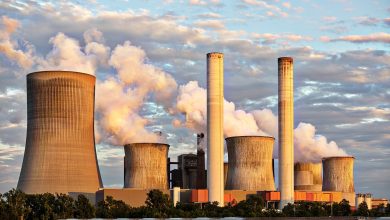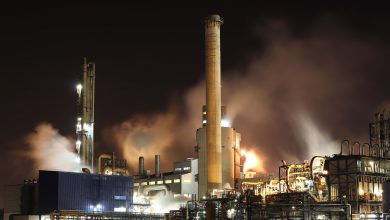The Potential of Hydrogen

Hydrogen is the most abundant chemical element in the universe and may provide one of the most efficient alternatives to fossil fuels. Germany recently announced plans to spend millions of dollars over the next several years on its hydrogen production infrastructure, and California continues to grow its hydrogen fueling station network. Causing governments and fuel industries alike to start seriously examining the viability of hydrogen as an alternative fuel, hydrogen, when used in fuel cells for electric vehicles, contributes zero emissions to the atmosphere.
What is hydrogen?
Hydrogen is the lightest element in the periodic table. Colorless, odorless, and non-toxic, it was first produced as a gas in the early sixteenth century due to the reaction of various acids on metals. However, pure hydrogen does not appear naturally on the planet. Producing hydrogen requires the extraction of hydrogen molecules using another energy source, such as electrolysis. During the industrial revolution, inventors experimented with different uses for hydrogen gas. In 1806, Francois Isaac de Rivaz built the de Rivaz engine, an internal combustion engine powered by a combination of oxygen and hydrogen. The hydrogen-powered limelight was later invented in 1823, and the first hydrogen-lifted airship came about in 1852. The early 1900s saw hydrogen used to power the famous rigid airships known as Zeppelins. Most of these technologies and inventions are no longer in use. However, hydrogen remains the gas used for most weather balloons, and the use of hydrogen has expanded into other areas. Heavy petroleum is broken down into lighter gas using hydrogen, and hydrogen is also necessary for hydrodesulfurization in the gas industry. Many of hydrogen’s industrial uses also involve on-site production, reducing transportation costs. Yet despite the ability to produce hydrogen on-site, natural gas production still dwarfs that of hydrogen, with U.S. hydrogen production currently standing at just about nine million metric tons.
How is hydrogen produced?
Modern hydrogen production can involve various methods. The four main sources for hydrogen include natural gas, oil, coal, and water, with steam reforming being the most popular hydrogen production method. Steam reforming offers an effective solution for producing hydrogen; however, it relies on natural gas. Heating the gas to extreme temperatures in a sealed atmosphere, steam reforming causes an endothermic reaction that breaks up the methane molecules, leaving carbon monoxide and hydrogen. One ton of hydrogen produced through steam reforming, however, generates nine to twelve tons of carbon dioxide as a byproduct. Coal gasification, another method for hydrogen production, uses steam and gases to extract a mixture of hydrogen and carbon monoxide from coal, with the coal-derived hydrogen gas being suitable as a fuel alternative. The drawback to both of these methods is that they still release pollutants into the atmosphere. To reduce emissions, industries are looking for more efficient ways to produce hydrogen, such as electrolysis.
Electrolysis involves the use of electricity to split water into separate hydrogen and oxygen molecules, and when the energy used to power electrolysis comes from renewable sources, hydrogen production produces no emissions. However, while some hydrogen production facilities use hydropower, wind, or solar power to split water, most electrolysis production does still use gas to power the process, as renewable energy sources increase production costs. Electrolysis is also not the most efficient hydrogen production method, though it does closely rival steam reforming in efficiency. Currently 70 to 80 percent efficient, steam reforming offers marginally better rates at 70 to 85 percent efficiency. But due to the increased demand for cleaner fuel, hydrogen technology is receiving significant funding in the United States, as well as several European countries. By 2030, experts expect electrolysis to reach 82 to 86 percent efficiency.
Fuel Cells and Fuel Stations
Almost all hydrogen produced is used for refining fossil fuels, producing fertilizer, and treating metals. However, thanks to the use of hydrogen-filled fuel cells, the transport industry is starting to implement the cleaner fuel source as well. Fuel cell electric vehicles (FCEVs) harness the energy of hydrogen to power the motor. High-pressure fuel tanks store the hydrogen, which is then delivered to a fuel cell, where it combines with oxygen to produce electricity. Stored as a compressed gas, with a pressure rating of 5000 to 10000 pounds per square inch (psi), hydrogen gas – like petroleum – is extremely flammable. Unlike traditional fuel, however, it is odorless and colorless, and requires special sensors to detect leaks. When transported, hydrogen gas is also costly and bulky. Yet while these challenges have limited the growth of hydrogen technologies, many industries rely on its fuel cells. Along with light-duty commercial FCEVs, hydrogen fuel cells appear in a variety of machines and vehicles. Buses, forklifts, and ground support equipment, as well as other various stationary applications, use hydrogen as an environmentally friendly power source.
While FCEVs have tanks to store hydrogen gas, drivers may still struggle to find hydrogen fueling stations. To address this problem, California has been investing heavily in hydrogen fueling infrastructure. The state has at least 40 public fueling stations and has plans to open 20 more. Meanwhile, through 2024, the California Energy Commission has allocated up to $20 million per year to fund the construction of additional filling stations, with the goal to have at least a hundred hydrogen fueling stations available to retail customers (CAFCP, 2018). Outside of California, fueling stations are primarily privately owned, used to refuel transport vehicles or to deliver hydrogen gas to other facilities. And while most of today’s electric vehicles use all-electric batteries instead of hydrogen fuel cells, if other states follow California’s lead, the auto industry will have more incentive to manufacture FCEVs.
Hydrogen Developments Abroad
Germany Moves Forward with Hydrogen
California is not alone in understanding the value of hydrogen production. Germany, expected to increase its hydrogen capacity to five gigawatts by 2030, recently unveiled plans for $520 million in subsidies to hydrogen producers (Dezem & Parkin, 2020). This is part of the country’s goal to cut its carbon dioxide emission levels in half by 2030 compared to its 1990 levels. The subsidies should encourage hydrogen producers to adopt production techniques that require fewer fossil fuels, while the country also plans to increase its infrastructure for hydrogen filling stations. Increasing support for hydrogen production is also part of Germany’s plan to reduce energy production from coal and nuclear power. Electrolysis stands out as the primary solution, eliminating the need for fossil fuels in order to produce hydrogen. 55 percent of the subsidies have been spent on the transport industry, helping to fund the hydrogen production infrastructure, and a large portion of the remaining funds will go toward the development of hydrogen technologies to help increase their efficiency.
As part of Germany’s plans for large-scale hydrogen production, the country is also in the process of converting its natural gas infrastructure. Establishing a hydrogen pipeline network that delivers hydrogen gas using the same network currently used to supply natural gas, the country plans for over 90 percent of its new hydrogen infrastructure to use the existing natural gas network. Reducing the massive costs that would come with building new infrastructure, Germany hopes to gradually reduce its dependence on natural gas, though experts predict natural gas will remain vital for generating German electricity for many years yet.
ThyssenKrupp Looks to Hydrogen
While most of the news related to hydrogen production revolves around the transport industry, other industries also seek to benefit from the technology. Steelmaker ThyssenKrupp, announcing plans to achieve carbon-neutral steel production processes by 2050, wants to reduce emissions by 80 percent and believes that hydrogen holds the solution. ThyssenKrupp’s current process using classic blast furnaces requires 300 kilograms of coke and 200 kilograms of coal. The company has already started replacing coal with hydrogen as the reducing agent in the blast furnace, and ThyssenKrupp plans on building direct reduction plants that eliminate the need for both coke and coal entirely, relying instead on renewable energy.
Solar-Powered Hydrogen In Dubai
One of the potential issues with hydrogen production is the need for other fuel sources to separate hydrogen from water. While electrolysis requires less fossil fuel compared to natural gas production, it still relies on electricity, and most hydrogen production facilities use fossil fuels to supply that electricity for electrolysis. In Dubai, however, efforts are already underway to use solar power. The Dubai Electricity & Water Authority and multinational company Siemens have partnered together to develop the first solar-powered water electrolysis plant in the region. When completed, the plant should have the capacity to produce up to 240 kilograms of hydrogen per day.
China Develops On-Demand Hydrogen Cells
Even with cleaner hydrogen production methods, using hydrogen gas still presents cost issues in the event it needs to be transported. In China, scientists and engineers believe they may have found a way to tackle the hydrogen’s transport problem, with a team of engineers at Tsinghua University and the Chinese Academy of Sciences developing a prototype for a new type of hydrogen fuel cell. The cell uses a metal alloy containing indium, tin, gallium, and bismuth. The addition of bismuth creates more durable hydrogen – however, the intriguing aspect of this technology is the ability to generate hydrogen in real time without separate facilities. The technology has not been implemented, as it is still in the research stage, but it showcases the potential for hydrogen in the future.
Hydrogen’s Pros and Cons as an Alternative Fuel
Hydrogen addresses many of the same use cases as natural gas without the release of harmful carbon emissions. It can be used as an alternative fuel for vehicles, heating, and electricity. Hydrogen is completely safe for the environment after it is produced, and a hydrogen fuel cell simply releases water and steam. The chemical element is available in water and organic matter, making it a renewable resource. However, the key obstacle to the efficiency and sustainability of hydrogen as an alternative fuel is the production process. As of today, 95 percent of hydrogen is still produced using steam reforming, releasing carbon monoxide and carbon dioxide into the atmosphere. These greenhouse gases contribute to climate change, limiting the primary benefit of hydrogen gas. While, after production, hydrogen gas can be used without releasing emissions, the emissions released during production still currently offset the benefits to the environment.
The solution to this – electrolysis – accounts for just two percent of worldwide hydrogen production so far, as electrolysis remains much more costly compared to steam reforming. Without new technologies, or without the discovery of ways to reduce the cost of electrolysis, organizations and nations may struggle to economically justify the transition to hydrogen. Hydrogen will also still need to address the issue of its more complex storage and transport requirements. The high-pressure tanks necessary to reduce the density of hydrogen gas incur greater costs in transport and require more space to store (DOE, 2017). Likewise, the carbon footprint of transporting carbon tanks is greater than traditional fuel due to the added amount of energy needed to transport the heavier tanks. These limitations keep industries from adopting hydrogen gas as a replacement for other fuel sources – and until these initial issues are addressed, hydrogen may struggle to see significant uptake in industry.
California, Germany, and several other independent companies are hoping that hydrogen is the future of the fuel industry. However, while hydrogen gas offers a green fuel source and produces zero emissions during combustion, the production process does face challenges. The future of hydrogen gas, and whether hydrogen gas can replace natural gas and other fossil fuels, hangs significantly on the outcomes of the projects in production around the globe, as well as new developments that may spur the efficiency of hydrogen production and reduce its costs.
Sources
CAFCP. (2018). “100 Stations White Paper.” California Fuel Cell Partnership.
Dezem, V. & Parkin, B. (2020). “Germany Taps Hydrogen Subsidies in Race to Replace Fossil Fuel.” Bloomberg.
DOE. (2017). “Hydrogen Storage.” United States Department of Energy.



